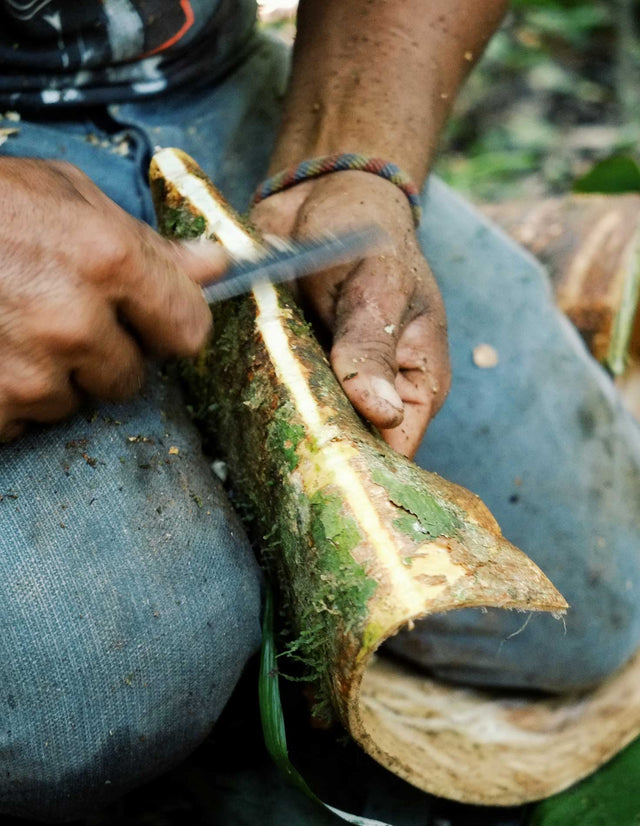
Ticuna Tribal Dolls
Nestled within the verdant Amazon rainforest of Colombia, Peru, and Brazil, the Tikuna people are celebrated for their rich cultural heritage and masterful craftsmanship. Among their most captivating creations are pucuna dolls, crafted from the bark of the Cecropia tree. These exquisite artifacts embody the Tikuna’s artistry and deep bond with the natural world, offering a glimpse into their vibrant traditions and creative spirit.
Symbolizing life's transitions & milestones
Pucuna dolls are more than decorative art; they hold deep ceremonial and social significance for the Tikuna people. These dolls play key roles in rituals, such as coming-of-age ceremonies, symbolizing life's transitions and milestones. They are also used in sacred practices to honor ancestral spirits and deities, serving as bridges between the physical and spiritual realms.
Each pucuna doll is intricately designed, adorned with symbolic motifs believed to invoke blessings and protection. Central to the Tikuna’s spiritual and cultural traditions, these dolls reflect their profound connection to their ancestors and the natural world.
Each doll tells a story
The creation of a pucuna doll begins with a respectful and sustainable harvesting of bark from the Cecropia tree, a resource cherished for its flexibility and strength. Artisans ensure the health of the tree is preserved, maintaining a balance with nature for future generations.
After the bark is carefully collected, it is soaked to soften, making it pliable for shaping into the distinctive doll form. Once shaped, the bark is embellished with vibrant patterns crafted from natural dyes and pigments. These intricate designs go beyond aesthetic appeal, embodying Tikuna mythology, spiritual beliefs, and cultural traditions. Each doll tells a story, weaving the Tikuna’s heritage into a work of art.




Frequently asked questions
Jen and Ed collaborate closely with skilled weavers and their representatives in each country from which we source our pieces.
Through these direct relationships, we've established meaningful connections with artisans and trusted individuals who represent their countries and tribes with authenticity and respect. Every piece is thoughtfully selected and approved by us personally—whether we bring it back from an in-person visit with the artists or receive it through regular shipments from our trusted partners.

We honor the prices set by the weavers themselves, ensuring that every commissioned basket is truly “fairly traded.”
Our artist-patron approach is built on direct, supportive relationships with weavers and their families, supporting them consistently through the months, and sometimes years, it takes to create each museum-quality basket. We believe that artisans should be compensated promptly for their work, without undue delay.
These skilled weavers are knowledgeable about the value of their craft in U.S. dollars and understand the worth of their time and talent. The growing number of men joining the weaving community shows the art’s increasing value compared to other forms of work. In fact, some weavers now command thousands of dollars for their finest pieces, reflecting the respect and value placed on their craftsmanship.

Purchase woven art because you love it, not simply for its potential to appreciate in value. However, as demand grows for high-quality, handcrafted basketry and supply remains naturally limited, prices have been rising substantially year after year.
We can gain insight into the future value of woven art by looking at trends with vintage and antique Native American baskets, which often fetch thousands to tens of thousands of dollars. A collectible work of art gains value based on market perceptions of its uniqueness, cultural significance, and craftsmanship, both now and in the future.
There is a limited number of skilled weavers capable of producing fine basketry, and even fewer who are true masters of this art. If weaving skills are not passed down through generations, and supplies of raw materials are affected by environmental challenges, previously made baskets could become even more valuable over time.



